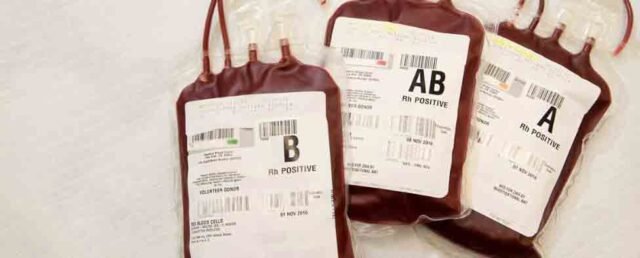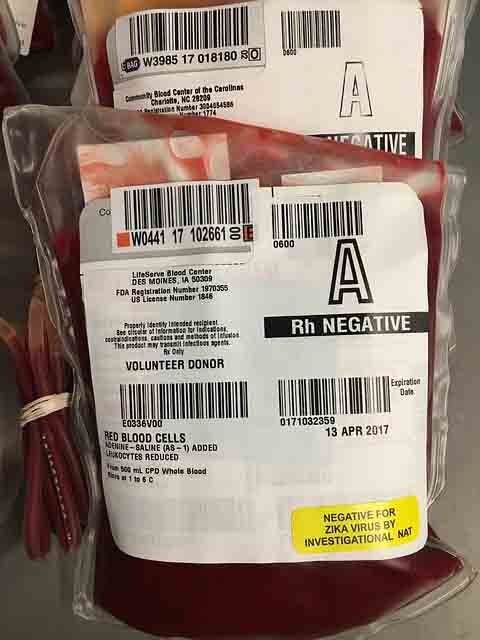Blood transfusions are a common lifesaving procedure that involve the transfer of blood or blood products from one person to another. However, the safety of the procedure is dependent upon the integrity of the blood bag labels, a crucial element that is commonly overlooked.
Blood bag labels provide critical information regarding the identity, type, and compatibility of the blood product, and incorrect or missing information can have serious consequences.
Despite the importance of blood bag labels, the technology used to create them has remained largely unchanged for over 40 years. This outdated technology makes it difficult to produce labels that are clear, concise, and accurate.
As a result, mislabeling errors in blood bags have become a growing concern in the healthcare industry, leading to serious adverse events and even death.
In this blog post, we explore the unspoken threat to your health posed by blood bag labels. We delve into the latest research on mislabeling errors and the impact they have on patient safety. We also discuss the shortcomings of current
The importance of accurate blood bag labeling
Blood transfusion is a life-saving process that requires meticulous attention to detail and strict adherence to guidelines. One of the most important aspects of this process is accurate blood bag labeling.
Blood bag label are the vital link between the blood donor and the recipient, providing essential information about the blood type, expiry date, and other critical details. The consequences of inaccurate blood bag labeling are severe and potentially life-threatening.
A simple human error, such as writing the wrong blood type on a label, can result in transfusing the wrong blood type into a patient, leading to severe complications and sometimes even death.
The importance of accurate blood bag labeling cannot be overstated, and it is the responsibility of all involved in the blood transfusion process to ensure that labeling is done correctly and up to the highest standards.
This document aims to explore the unspoken threat that inaccurate blood bag labeling poses to your health and the importance of its proper implementation.
The risk of mislabeled blood bags

Blood bag labels are a critical component in the blood supply chain, allowing healthcare workers to safely and accurately administer the right blood products to patients. However, the risk of mislabeled blood bags poses a serious threat to patients’ health and safety.
Identifying and addressing these mislabeling errors is essential to ensuring that patients receive the correct blood product that matches their specific blood type. This requires a comprehensive and rigorous process that ensures accurate labeling and tracking of blood bags from collection to transfusion, as well as strict adherence to best practices and regulatory standards.
Healthcare providers must take the necessary steps to mitigate the risk of mislabeled blood bags, including implementing thorough training programs and utilizing advanced technology solutions to enhance the accuracy and efficiency of the blood labeling process. Failure to do so can have severe consequences, including patient harm, legal liability, and damage to the reputation of the healthcare organization.
How to identify and protect yourself against mislabeled blood bags
Blood bag labels are essential in maintaining the safety and integrity of blood products. Proper labeling ensures that blood can be safely transfused without the risk of causing harm to the patient.
However, mislabeled blood bags can pose serious threats to patient safety. This document titled “Blood Bag Labels: The Unspoken Threat to Your Health” seeks to address the issue of mislabeled blood bags and provide key insights into how to identify and protect yourself against such mislabeled blood products.
This information is critical for healthcare professionals to prevent patient harm, and for patients to understand their rights and advocate for their safety. In this article, we will discuss how to identify mislabeled blood bags and provide tips for protecting yourself and your patients against this unspoken threat to patient safety.
The consequences of mislabeled blood bags
Mislabeling blood bags presents a serious threat to the health of patients in medical settings. When blood bags are mislabeled, there is a risk of patients receiving the wrong blood type, which can cause severe reactions and potentially life-threatening consequences.
This can occur as a result of human error, inadequate training, or insufficient quality control measures during the labeling and handling process. Despite the importance of accurate labeling, it often goes unaddressed as a primary concern in hospitals and clinics. It’s critical that healthcare institutions prioritize sufficient training and quality control measures to prevent the potentially fatal consequences of mislabeled blood bags.
Neglecting this aspect of patient safety can have dire consequences for individuals in need of blood transfusions.

Best practices for ensuring blood bag accuracy
Ensuring the accuracy of blood bags is a critical component of transfusion medicine. Any mistake can lead to significant harm or even death for the recipient.
Therefore, it is essential to implement best practices to ensure the accuracy of blood bag labeling. The following are five best practices that can help mitigate the risk of labeling errors:
- Standardize labeling requirements: Standardize labeling requirements to ensure consistency and minimize the risk of mislabeling errors.
- Use barcode technology: Barcode technology can automate the labeling process, reducing human-error chances.
- Train staff regularly: Train all staff, including nurses and phlebotomists, on proper labeling procedures and ensure that they stay updated.
- Double-check labeling: Implement a double-check system for labeling that includes verification of blood type and compatibility.
- Perform regular audits: Conduct regular audits of the labeling process to ensure ongoing compliance with labeling standards.
- By following these best practices, blood banks and medical facilities can significantly reduce the likelihood of blood bag labeling errors and minimize the potential harm to patients.










